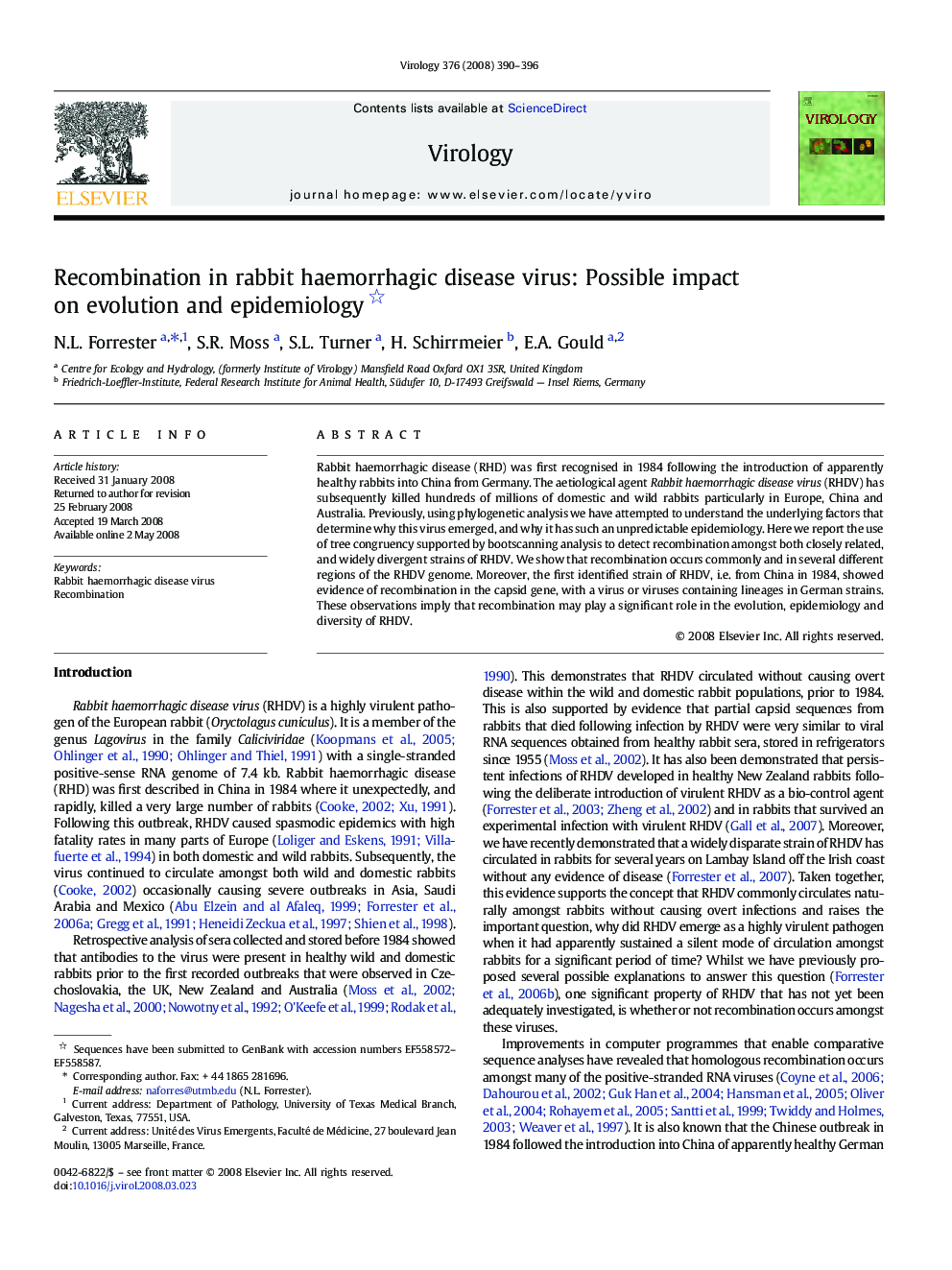| Article ID | Journal | Published Year | Pages | File Type |
|---|---|---|---|---|
| 3426034 | Virology | 2008 | 7 Pages |
Rabbit haemorrhagic disease (RHD) was first recognised in 1984 following the introduction of apparently healthy rabbits into China from Germany. The aetiological agent Rabbit haemorrhagic disease virus (RHDV) has subsequently killed hundreds of millions of domestic and wild rabbits particularly in Europe, China and Australia. Previously, using phylogenetic analysis we have attempted to understand the underlying factors that determine why this virus emerged, and why it has such an unpredictable epidemiology. Here we report the use of tree congruency supported by bootscanning analysis to detect recombination amongst both closely related, and widely divergent strains of RHDV. We show that recombination occurs commonly and in several different regions of the RHDV genome. Moreover, the first identified strain of RHDV, i.e. from China in 1984, showed evidence of recombination in the capsid gene, with a virus or viruses containing lineages in German strains. These observations imply that recombination may play a significant role in the evolution, epidemiology and diversity of RHDV.
